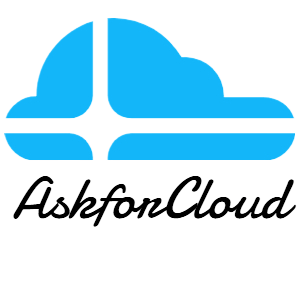
Overview

Product video
The GridGain(R) In-Memory Computing Platform, built on Apache(R) Ignite(TM), enables you to dramatically accelerate and scale out your data-intensive applications without ripping and replacing your existing databases. GridGain delivers massive scalability and tremendous speed, managing data from multiple databases. Query times are up to 1,000x faster than systems built on disk-based databases. You can easily scale out your GridGain instance to support petabytes of in-memory data by adding new nodes to your cluster. GridGain includes an in-memory data grid, in-memory database, streaming analytics, and a continuous learning framework.
You can modernize your data-intensive architecture by inserting GridGain between your existing application and data layers. GridGain works seamlessly with RDBMS, NoSQL and Hadoop databases. It features a unified API which supports SQL, C++, .NET, PHP, MapReduce, JAVA/Scala/Groovy, and Node.js access for the application layer. GridGain can run on premises, in a hybrid environment, or on the AWS or other public cloud platforms.
Highlights
- The GridGain(R) In-Memory Computing Platform, built on Apache(R) Ignite(TM), enables you to dramatically accelerate and scale out your data-intensive applications without ripping and replacing your existing databases.
- GridGain(R) delivers unlimited scalability and tremendous speed. Query times are up to 1,000x faster than systems built on disk-based databases. You can easily scale out your GridGain instance to support petabytes of in-memory data by adding new nodes to your cluster.
- GridGain(R) modernizes your data-intensive applications. GridGain works seamlessly with RDBMS, NoSQL and Hadoop databases. It features a unified API which supports SQL, C++, .NET, PHP, MapReduce, JAVA/Scala/Groovy, and Node.js.
Details
Introducing multi-product solutions
You can now purchase comprehensive solutions tailored to use cases and industries.

Features and programs
Financing for AWS Marketplace purchases

Pricing
Dimension | Cost/hour |
|---|---|
c4.xlarge Recommended | $1.50 |
c3.xlarge | $1.50 |
d2.xlarge | $1.50 |
m4.10xlarge | $15.00 |
i2.xlarge | $1.50 |
r3.2xlarge | $3.00 |
m3.xlarge | $1.50 |
r3.4xlarge | $6.00 |
m4.xlarge | $1.50 |
m3.2xlarge | $3.00 |
Vendor refund policy
We do not currently support refunds, but you can cancel at any time
How can we make this page better?

Legal
Vendor terms and conditions
Content disclaimer
Delivery details
64-bit (x86) Amazon Machine Image (AMI)
Amazon Machine Image (AMI)
An AMI is a virtual image that provides the information required to launch an instance. Amazon EC2 (Elastic Compute Cloud) instances are virtual servers on which you can run your applications and workloads, offering varying combinations of CPU, memory, storage, and networking resources. You can launch as many instances from as many different AMIs as you need.
Version release notes
Additional details
Usage instructions
See GridGain AWS Marketplace Getting Started Guide at http://www.gridgain.com/company/partners/amazon-aws-deployment#amazon-aws-deployment
Support
Vendor support
GridGain(R) AWS Marketplace Deployment Support https://www.gridgain.com/partners/aws-support https://www.gridgain.com/products/services/support
AWS infrastructure support
AWS Support is a one-on-one, fast-response support channel that is staffed 24x7x365 with experienced and technical support engineers. The service helps customers of all sizes and technical abilities to successfully utilize the products and features provided by Amazon Web Services.
Similar products




Customer reviews
Powerful In-Memory Computing Platform with Strong Performance
Supercharged Data Access for Smarter, Faster Strategy
High-Performance In Memory Computing
Powerful In-Memory Computing for High-Performance Apps
GridGain Delivers Real-Time Power for Data-Driven Applications
Steep Learning Curve:
The architecture is powerful but complex. New users often struggle with concepts like data affinity, collocated processing, and distributed joins.
Heavyweight Compared to Simple Caches:
For basic caching needs, GridGain (and Ignite) can feel like overkill compared to lightweight solutions like Redis or Memcached.
Advanced Features Behind Paywall:
Many enterprise features (security, monitoring, rolling upgrades) are only in the Enterprise or Ultimate editions, not in the Community Edition.
GridGain is powerful, but its complexity, configuration overhead, and limited free-tier features can be barriers to adoption.
Problem: Slow Data Access from Disk-Based Databases
Traditional databases are too slow for real-time apps due to disk I/O latency.
GridGain Benefit:
Stores data in-memory across a cluster for microsecond response times, enabling real-time analytics, fraud detection, and responsive user experiences.
Problem: Scaling Bottlenecks in Centralized Systems
Single-node systems can't handle growing data and user load efficiently.
GridGain Benefit:
Its distributed architecture scales horizontally, letting you add nodes as demand grows, ensuring high availability and elasticity.
Problem: Separation of OLTP and OLAP Systems (HTAP Gap)
Using different systems for transactions and analytics creates latency, duplication, and complexity.
GridGain Benefit:
Supports Hybrid Transactional/Analytical Processing (HTAP), so you can query live transactional data in real time, reducing architecture complexity.
GridGain solves performance, scalability, and latency issues in data-intensive systems, enabling real-time processing and simplifying complex architectures.